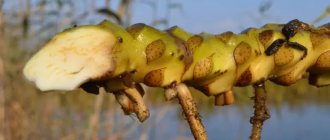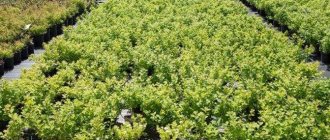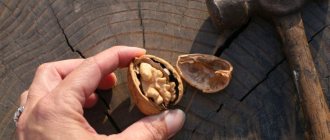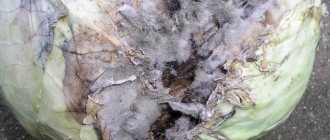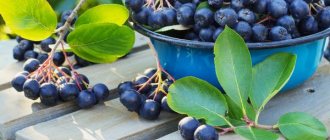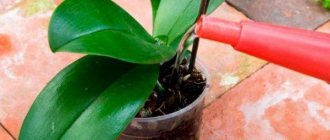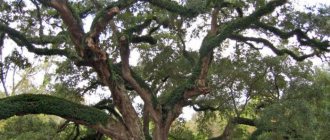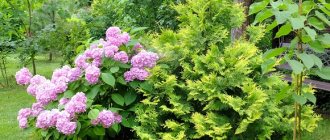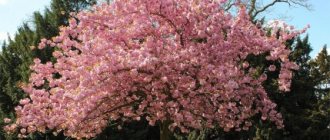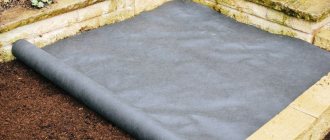Loading…
Loading…
Every year, delicate graceful flowers notify people of great joy - the arrival of spring. In a similar way, the alder tree “tactfully tells” summer residents that it’s time to get to work. When there is still snow on the fields, its buds rapidly swell. Over time, flowers appear on the branches, which are pollinated by a light spring breeze. This happens year after year because life goes on.
To truly appreciate the culture, let’s take a closer look at what alder is. What does she look like from the outside? Where does it grow in nature? What properties does it have and is it widely used by people? A fascinating search for answers to questions will certainly bring true pleasure to flora fans.
Objective description of culture
In books on mythology, the plant is associated with various gods, wizards and witchcraft.
In fact, exquisite alder attracts people with its unique “shapes”. Biologists classify it as a member of the Birch family. Some species really look like their “relative,” especially in the spring, when catkins bloom on the crop. Alder is a slender tree with an erect or slightly curved trunk. It is covered with a glossy gray bark. In its natural environment, the crop grows from 20 to 35 m in height. Much depends on the fertility of the soil and the type of plant.
Crown and flowering
What does alder look like from the outside? The photo clearly shows a lush, slightly sparse crown. It is formed by branches growing unevenly from the trunk. In early spring, they form graceful heterosexual catkins with an abundance of pollen. Male specimens are usually large in size (up to 9 cm). Females reach only 1 cm. After successful pollination, so-called cones with a filmy or scaly surface appear. They ripen and open in the fall. As a result, the seeds fall to the ground or are carried by wind currents over long distances.
In moist soil, the seeds germinate very quickly and create dense thickets near lakes, marshy meadows and rivers.
Foliage Features
When flowering has passed, buds swell on the branches, ready to release fresh greenery. What do the leaves of alder, the humble tree that heralds the arrival of spring, look like?
Looking closely at the plate, we note several features:
- oval shape;
- jagged frame;
- rich green color.
Interestingly, even in autumn the foliage does not change its bright color. After the first frost, it gracefully falls to the ground. The plates are believed to contain large amounts of nitrogen. Therefore, after their “death” they enrich the top layer of soil with a valuable component.
Underground part of the culture
The root system of the alder tree has a surface structure. Its main expanded part is located at a depth of 20 cm. The roots tightly entwine everything that comes in their way. Therefore, the crop is planted near reservoirs to strengthen the coastal slopes of artificial reservoirs.
Unfortunately, due to the shallow structure of the root system, trees suffer from hurricanes.
general information
The description of alder (olha) suggests a fairly dense crown, but due to the uneven arrangement of branches it looks slightly sparse. When there is still snow on the streets, this tree is already beginning to bloom.
When flowering, very attractive earrings appear on the alder , and they can be both male and female. If they are green when formed, then at the ripening stage they become brownish-red.
Female earrings grow up to 1 cm in length and are located on the branches in clusters of up to 7-9 pieces. Male formations grow up to 6-9 cm. Leaves on the plant appear only after it blooms.
The fruits of the plant are greenish cones. During the entire winter period they are closed, but with the arrival of spring they open and seeds fall out of them into the ground. The cones ripen only in October - November. Summer residents note that alder leaves are an excellent substitute for fertilizers, as they contain a large amount of nitrogen.
The average lifespan of a plant is 100 years. However, there are also long-lived trees, whose age reaches 150-160 years. Most often, this plant is found in places with moist soil. It is for this reason that alder mainly grows near bodies of water.
If suitable conditions for alder are determined in an area, then thickets of trees—alder forests—are formed on it. In the northern regions, this plant is found in the form of a coniferous tree. In the southern regions it is not very common and is found in mixed forests along with beech and oak. The plant feels great next to ordinary aspen, linden, oak, spruce and birch and some shrubs.
This tree can perform not only decorative functions, it is also a good honey plant. In the process of development, alder forms leaves and buds containing many resinous compounds from which bees make propolis.
Alder wood for every taste
There are about 40 varieties of culture in nature. Each of them has its own crown shape, bark color, foliage and earring configuration. Let's get acquainted with the most popular options.
Black (sticky) alder
Adult specimens grow up to 35 m. The spreading crown is about 12 m. The life cycle of the crop is approximately 90-100 years. Black alder is used for arranging city parks and strengthening the steep banks of various types of reservoirs.
Inflorescences appear on it quite early, when other plants are in a state of winter dormancy. But the fruits reach only the next season. In Moldova, Kazakhstan and some regions of Russia, culture is protected by law.
Gray alder
An adult tree grows up to 20 m throughout its life. It is distinguished by its ovoid crown. The name of the variety is directly related to the color of the bark and leaf blades. The decorative decoration of alder are the deep brown catkins. The tree is valued for its special resistance to low temperatures. It also grows wonderfully in wetlands, turning them into cozy corners of nature.
Heartleaf and green alder
The first variety is distinguished by decorative egg-shaped foliage with pointed tips. The edges of the plate are crowned with small notches. Grows up to 15 m. In its natural environment it is found in the vastness of Italy. The green variety is represented by a tree or shrub. It is characterized by high frost resistance. Some specimens grow up to 20 m in height.
Red alder tree
The plant has a unique decorative appearance. The trunk and main branches are covered with light gray bark. However, the surface of young shoots is painted dark red. At first, the shoots have a thick layer of villi. Over time, they fall off and the bark becomes smooth. The dark green foliage is framed by jagged sides, and the back of the plate is strewn with many red hairs.
Having examined the varieties of the crop, we will learn how to distinguish alder from other trees. First of all, it begins to bloom earlier than everyone else. Graceful earrings form on it, and after pollination, miniature cones appear. The foliage and fruits have medicinal properties.
Metaphysical properties of alder
In ancient times, it was believed that wood had special, mystical qualities. After all, after a tree was cut down, its wood turned from white to red, as if blood was coming from the wound.
The ancient Slavs had a legend about this, according to which the devil decided to create a wolf, as God did, but could not revive it. But God himself revived the wolf, and the wolf attacked the devil. He decided to hide in a tree, but the predator managed to bite his leg. The blood from the devil's heel turned the alder tree red.
According to another legend, an alder branch is a symbol of resurrection, or a place where the souls of deceased ancestors settle. Various amulets, talismans and amulets were made from its wood that could protect the clan and family hearth from enemies and misfortunes. Alder, in which the souls of ancestors live, was the patroness of family and home.
Mystics and magicians call alder a consumer tree, capable of taking both positive and negative energy from a person. It can relieve a person of stress, but you will have to pay for it with your vitality. You can turn to her with requests for help for family members, but you cannot ask her for anything for yourself.
Extensive growing area
The culture prefers a temperate climate, which is observed in the Northern Hemisphere. However, it can also be found in South America and even in Asia. Where does alder grow in Russia? A large number of trees were discovered in the Urals and Western Siberia. They take root wonderfully in damp forests or near coastal areas of rivers and lakes.
In the Far East, these varieties are mainly found:
- Italian;
- Japanese;
- Siberian.
However, wherever the alder tree grows, gorgeous landscapes are formed. Therefore, it is often grown in garden plots and city parks. The plant is propagated by seeds, which mature trees produce in abundance. They are characterized by rapid germination in abundantly moist areas.
The alder tree is unpretentious to the type of soil and climatic conditions.
Where else is alder used?
Gray alder can be classified as a tree that is valued by humanity. The wood of this plant burns well and gives excellent warmth. Wood is also used in carpentry and turning.
Alder wood is distinguished by its color, its core has unusual light orange shades, one might say, orange color. Modern doors, window openings, and furniture are made from alder material.
In addition, in ancient times alder bark was used as a natural paint. When dyed, the result is a rich black color. Today, as in the old days, the use of sulfur alder cones in pharmacological production is relevant.
Procurement of raw materials
For phytotherapeutic treatment, alder fruits - cones - are most often used, although decoctions and infusions can be prepared from the bark. Harvesting of material is usually carried out in autumn, winter or early spring, while the weather is still cool.
On an industrial scale, alder cones are harvested in areas that were allocated for cutting down trees for sanitary cleaning of forest belts. And it’s much easier to remove fruit from a fallen tree than to climb on it. Cones that fall to the ground are not suitable for making preparations and solutions, so they are not collected.
To facilitate the collection process, branches are cut from the tree using a sharp pruner, and then the cones are torn off from them. As soon as the fruits are collected in bags, they are sent to special pavilions where the drying process is carried out. At home, fruits are dried in the attic, under awnings. The cones are spread in a thin layer and the raw materials are kept for a week, until completely dry, stirring constantly. When the prepared raw material dries completely, it becomes dark brown in color. Cones can be stored for up to three years.
Currently reading:
- Increased potato yield using Dutch technology
- Restoration and stimulation of orchid flowering with succinic acid
- Planting to decorate the site with three types of coniferous trees
- Cultivation and use of black and European alder
Share the news on social networks
About the author: Vladimir Petrovich Efremov
Chief agronomist of the limited liability company “Association of Peasant (Farm) Farms “Kuznetsovskaya””, Ilovlinsky district of the Volgograd region.
Application
Due to the beneficial properties of the tree, alder is actively used in folk medicine. For example, the buds have antimicrobial properties.
Therefore, drugs for treatment are prepared from them:
- psoriasis;
- various fungi;
- eczema.
Tinctures help restore the functioning of the gastrointestinal tract. Astringents obtained from the leaves are used during nosebleeds. Decoctions are used in the treatment of colds.
The use of alder wood in folk art is of particular delight. The material is used for making:
- decorative panels;
- wooden sculptures;
- carved dishes;
- underground structures;
- furniture.
In addition, alder is widely used for industrial purposes. Wood lends itself wonderfully to varnishing, staining and polishing. It does not lose integrity when screwing in self-tapping screws. Due to the fact that the raw material can be quickly dried and does not lose its properties, musical instruments are made from it.
As you can see, the alder tree is a wonderful decoration of the green planet. Its various types are used to form landscape areas. The plant is not afraid of urban pollution, so it is often planted along highways. It is impossible to take your eyes off the openwork oval-shaped crown and many fluttering leaves. Let us appreciate a modest tree with a majestic appearance.
Alder in folk medicine
Alder leaves, bark, and alder seeds, which are recommended to be collected in late autumn, have a healing effect. When harvesting, the cones are cut with garden shears and then dried indoors at room temperature. If everything is done correctly, the fruits will have a brown or brown color, a light aroma and an astringent taste. The leaves are harvested at the beginning of summer, and the bark at the beginning of winter.
Due to the presence of essential oils, organic acids, tannins, alkaloids and other components, preparations based on alder fruits and leaves have a blood purifying, bactericidal, hemostatic, and astringent effect. Decoctions of the seeds and leaves of this plant provide a diaphoretic and antimicrobial effect and reduce inflammation.
An infusion of alder fruits is used to treat disorders of the gastrointestinal tract; the bark is used for enterocolitis and digestive disorders. Decoctions based on the plant cleanse the skin, heal wounds, eliminate nosebleeds, reduce allergies, and help with rheumatism.
Type of alder for design
Gray alder Pendula is an amazingly beautiful plant with pubescent shoots containing green ellipsoid-shaped leaves. Its height reaches up to 20 meters, the crown is pyramidal and loose.
This alder is very unpretentious. It can tolerate both severe frosts and drought. The best place for its growth is the most humid areas.
Typically, this variety is used not only to create beautiful hedges, but also to strengthen heavily crumbling slopes and slopes.
Landscape use
The oval, openwork crown of the alder with moving branches and fluttering leaves looks very lively. Plants do not suffer from urban air pollution, so they can be planted along the road. Low trees or lush shrubs up to 3 m high are usually used as hedges. They are planted in a strip method quite densely and regularly shaped.
Large single-trunk trees are used in single plantings or in groups over a large area. They are planted along paths and alleys. Alder can also be used in compositions of shrubs and trees, combining plants with different colors and foliage structures.
Gray alder: photo, description
The tree reaches a height of up to 20 meters. It has a narrow ovoid crown and a trunk with a diameter of about 50 centimeters.
Its small flowers are collected in long earrings. The female flowers do not have a perianth and are located 2 in the axils of the scales of the inflorescence, which become lignified by autumn. After which they form a short, dark brown, oval-shaped cone. The male flowers (four-membered perianth) sit in the axils of the scales of the earrings, three at a time.
Gray alder has pointed, ovate-shaped leaves on petioles (see photo of tree and leaves above). Below they are gray-green in color, and along the veins they have slight pubescence.
Alder wood is light, soft, white, but it turns red in the air. Young alder branches are fluffy and non-sticky. The light gray bark is smooth.
The inflorescences (cones) are up to 1.5 centimeters in size, hanging in several pieces, like earrings. The male inflorescences produce quite a lot of pollen. Gray alder blooms in early spring (March to April).
